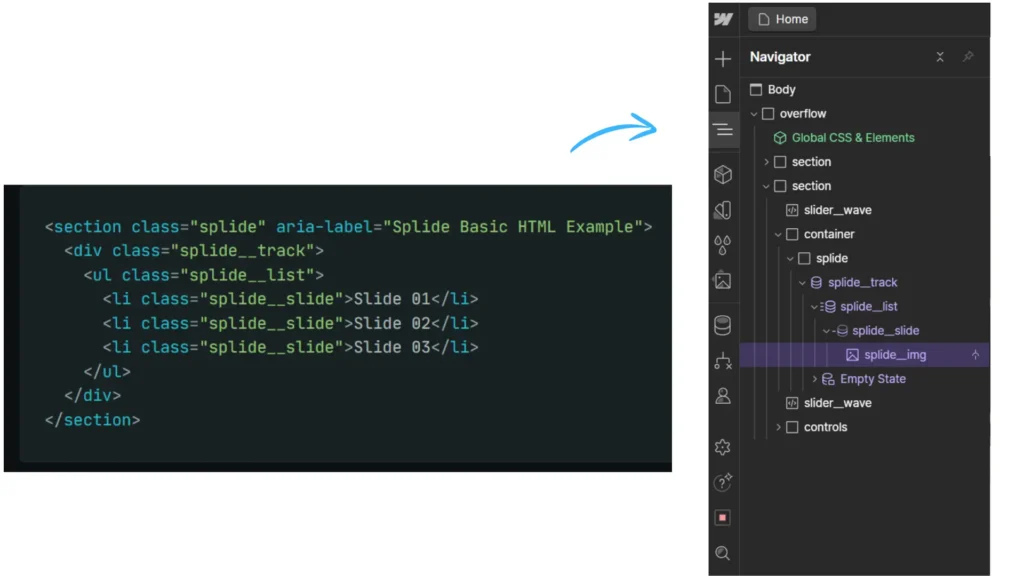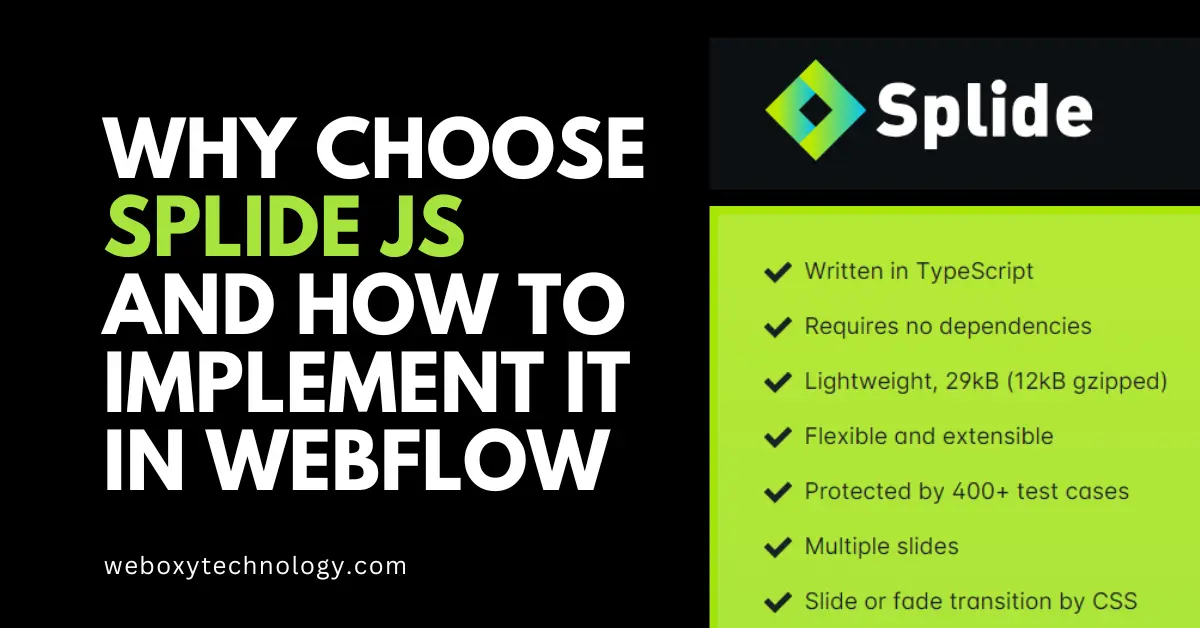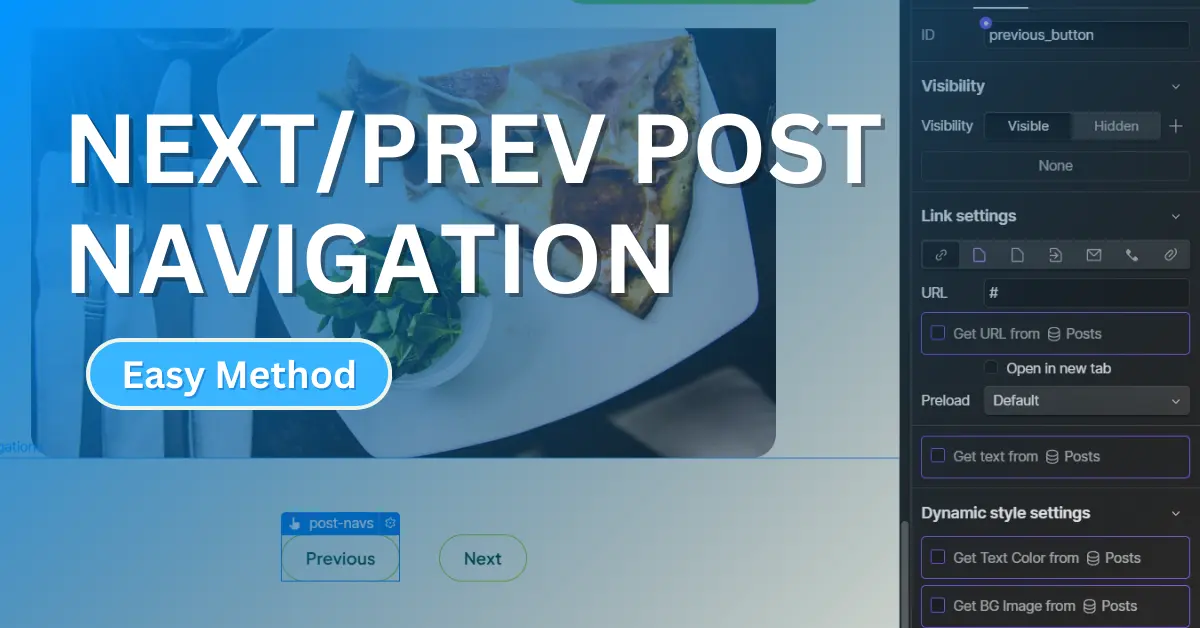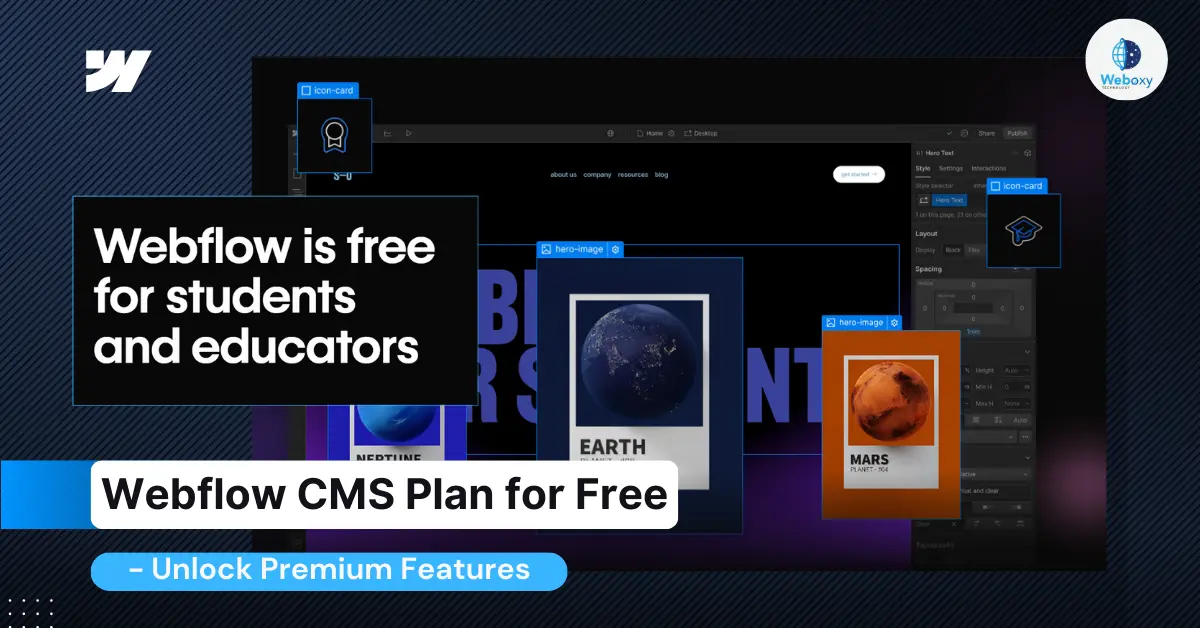What is Splide.js?
Splide.js is a powerful, lightweight, and flexible JavaScript library designed specifically for creating sliders and carousels. It enables developers to easily implement responsive sliders with a wide range of features, making it suitable for a variety of use cases, from basic image sliders to complex, highly customized carousels. Unlike other slider libraries, Splide.js focuses on performance, delivering fast load times and a smooth user experience across all devices. It’s also modular, allowing developers to load only the components they need, keeping projects efficient and clutter-free.
Splide.js is known for its ease of use and developer-friendly setup, making it accessible for beginners and advanced users alike. With its robust documentation and active community, it has become a go-to option for creating sliders in web projects.
Why Choose Splide.js for Sliders?
Splide.js stands out from other slider libraries for several reasons, making it an excellent choice for web developers and designers. Here are some key benefits:
- Lightweight and Fast: Splide.js is designed to be lightweight, ensuring that your site remains fast and responsive. It minimizes the amount of code required to create functional sliders, reducing load times and improving performance, especially on mobile devices.
- Responsive and Mobile-Friendly: With Splide.js, you don’t have to worry about how your slider looks on different screen sizes. It automatically adapts to various device widths, ensuring that the slider is fully responsive and mobile-friendly out of the box.
- Multiple Slider Types: Whether you need a simple slider, looped carousel, or fade transition, Splide.js offers a variety of slider types. Its versatility allows you to choose the best option based on the design and functionality.
- Highly Customizable: Splide.js provides numerous configuration options, allowing you to control everything from slide transition speed to autoplay settings.
- SEO and Accessibility Focused: Splide.js prioritizes both, ensuring that your slider is accessible to all users, including those using screen readers, and doesn’t negatively impact your site’s SEO performance.
High-Tech Features of Splide.js
Splide.js is packed with cutting-edge features that make it a standout choice for developers and designers seeking an efficient slider solution. Let’s dive into its most notable features that set it apart.
1. Lightweight and Fast Performance
Splide.js is designed to be lightweight, with minimal file size, ensuring that your website remains quick and efficient. It doesn’t bog down your site with unnecessary code, which translates to faster load times and a smoother user experience. This is especially important in today’s web environment, where performance impacts both user satisfaction and search engine rankings.
2. Responsive and Mobile-Friendly Design
In today’s mobile-driven world, it’s essential to have a slider that effortlessly adjusts to various screen sizes. Splide.js automatically adjusts to fit any device, whether it’s a smartphone, tablet, or desktop. The slider scales perfectly, ensuring that your content is always presented in a user-friendly way, without requiring extra effort or coding from you.
3. Multiple Slider Types (Loop, Fade, Autoplay)
One of the strengths of Splide.js is its versatility. Whether you need a simple, continuous loop slider, a fading transition between slides, or an autoplay option for hands-off browsing, Splide.js has you covered. These multiple slider types allow you to pick the one that best fits your design needs and the user experience you want to offer.
4. Extensive Customization Options
Splide.js goes beyond basic slider functionality with a robust set of customization options. You can control every aspect of the slider, from the speed and timing of transitions to the layout and spacing between slides. Whether you want to add arrows, pagination, or custom animations, Splide.js offers the flexibility to create a slider that aligns perfectly with your vision and brand.
5. SEO and Accessibility Optimized
In today’s digital landscape, optimizing for both search engines and accessibility is essential. Splide.js is designed to support SEO by maintaining clean, semantic HTML, which helps search engines index your content effectively. Additionally, it’s built with accessibility in mind, ensuring that users with disabilities can easily navigate your sliders, making your site more inclusive and compliant with accessibility standards.
Comparing Splide js to Other Slider Libraries
Splide jS vs Swiper JS
When comparing Splide.js to Swiper.js, both libraries offer robust features for building sliders, but they serve different needs. Swiper.js is known for its comprehensive functionality and is often used for more complex sliders, especially those requiring touch interactions and advanced features like parallax effects.
However, Splide.js is lighter in weight and easier to set up, making it an excellent choice for developers looking for quick, efficient, and highly customizable sliders without adding extra load to their websites. If performance and simplicity are priorities, Splide.js edges out Swiper.js, especially for small to medium-sized projects.
Win: Splide JS
Splide js vs Slick Slider JS
Slick Slider has long been a popular choice for creating basic sliders, but it hasn’t received significant updates in recent years. On the other hand, Splide.js provides a more modern solution, with a focus on performance and customization. While Slick Slider is relatively easy to implement, Splide.js offers more extensive configuration options, such as better handling of responsive designs and a more flexible API.
Additionally, Splide.js is built with accessibility and SEO in mind, which gives it a distinct advantage over Slick Slider, especially for projects requiring up-to-date standards and performance optimization.
Win: Splide JS
How to Implement Splide.js in Webflow
Implementing Splide.js in Webflow is a straight forward process that can significantly enhance the visual appeal of your website. Here’s a guide on how to do it easily in webflow.
Attach Splide.js in Webfw
We can easily add the Splide.js CDN to utilize this powerful library for creating interactive sliders. Snippets are provided by Splide.js to help implement it in Webflow.
<script src="https://cdn.jsdelivr.net/npm/@splidejs/splide@4.1.4/dist/js/splide.min.js"></script>
<link href="https://cdn.jsdelivr.net/npm/@splidejs/splide@4.1.4/dist/css/splide.min.css" rel="stylesheet">Applying Splide.js Classes in Webflow
Follow the structure below to implement the required HTML layout and apply the Splide.js classes within Webflow.

Running the Script in Page Code
Use the custom navigations script below or adjust it to meet your specific needs. Apply styling in Webflow’s Designer. For more customization options, refer to the Splide.js documentation and follow the guide by clicking the link.
<script>
// Initialize Splide
var splide = new Splide('.splide', {
type: 'loop',
perPage: 3,
perMove: 1,
arrows: false, // Disable default arrows
});
splide.mount(); // Mount Splide
// Add custom navigation functionality
document.addEventListener('DOMContentLoaded', function () {
// Select custom navigation buttons
var prevButton = document.querySelector('.custom-prev');
var nextButton = document.querySelector('.custom-next');
// Add event listeners for custom buttons
if (prevButton) {
prevButton.addEventListener('click', function () {
splide.go('<'); // Go to the previous slide
});
}
if (nextButton) {
nextButton.addEventListener('click', function () {
splide.go('>'); // Go to the next slide
});
}
});
</script>
Final Thoughts and Best Use Cases for Splide.js
Splide.js shines in a variety of use cases, from simple image carousels to complex, dynamic sliders with autoplay and transition effects. Its versatility makes it suitable for websites that need visually appealing, interactive elements, such as portfolios, product galleries, or landing pages. By offering extensive customization, Splide.js empowers developers to create sliders that perfectly match their site’s design and functionality needs.
For Webflow users, integrating Splide.js brings the best of both worlds—professional, high-quality sliders with minimal coding effort. If you’re looking to enhance your website’s interactivity and visual appeal, Splide.js is the perfect fit for your Webflow projects.
For more Premium sliders, explore our Slider Categories to discover additional interactive features.



